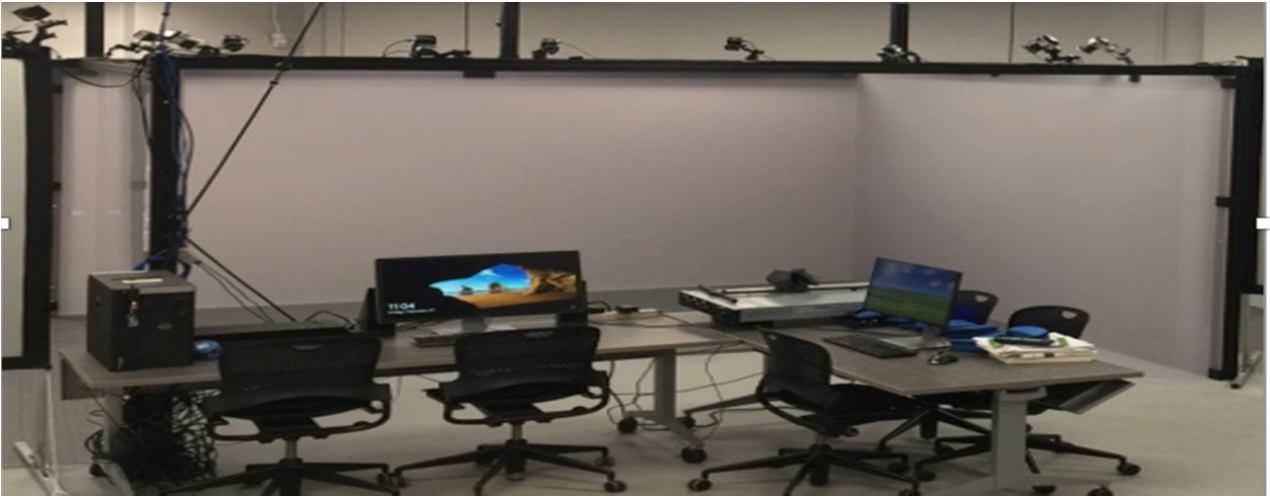
2 minute read
International Journal for Research in Applied Science & Engineering Technology (IJRASET)
from Effectiveness of Immersive Virtual Reality for Mechanical Engineering Capstone Courses
by IJRASET

ISSN: 2321-9653; IC Value: 45.98; SJ Impact Factor: 7.538
Advertisement
Volume 11 Issue I Jan 2023- Available at www.ijraset.com
II. BACKGROUND ON MECHANICAL ENGINEERING CAPSTONE
The undergraduate Mechanical Engineering program is one of several newly introduced engineering programs in the GameAbove College of Engineering and Technology at Eastern Michigan University (EMU). The College has five major priorities including increasing the College’s research and teaching profile in the emerging fields of autonomous systems, robotics and mobility cybersecurity, sustainability, virtual reality applications in manufacturing and smart living. The Mechanical Engineering senior capstone course at EMU is a sequence of two 3-credit hour courses delivered fall/winter in the senior year.
The two-course Mechanical Engineering Capstone sequence is focused on applying design of mechanical, electromechanical, thermo-fluid and energy systems, and devices that introduce a new problem-solving approach or innovate a capability that improves peoples’ lives. Students are allowed to select from a set of Department-proposed and industry-sponsored projects. Students work in teams of three to five members depending on the expected scope of the capstone project. The establishment of the 1500 square feet VR Lab in the College enhances the access to research tools in VR field for both teaching and research, hence fulfilling one part of the priorities of the College. The VR Lab within the College attracted external equipment funding that facilitated expanding the three-wall system into 4-wall system. The Mechanical Engineering program is a fairly new program and is growing very rapidly. It is expected to offer the capstone sequence in multiple sections of 25 to 30 students in the next two years. Currently, the capstone sequence is being delivered with six capstone projects in the current cohort.
The capstone sequence provides a holistic umbrella to emphasize and apply advanced engineering design knowledge gained during junior year and continued to be learned during senior year. Initially, for the first three cohorts, the capstone sequence utilized the following methods for student prototyping
1) Physical prototyping utilizing the machine shop and fabrication shop in the Game Above College of Engineering and Technology
2) Rapid prototyping methods utilizing fused deposition modeling (FDM)
3) Virtual reality prototyping
The utilization of VR in place of physical prototyping using a machine shop or fabrication shop started during the fourth cohort of Mechanical Engineering senior capstone classes. Students progress from building conceptual designs, to intermediate detailed designs, and finally detailed designs using CAD tools available in the curriculum.
III. DESCRIPTION OF THE VR LAB AT THE GAME ABOVE COLLEGE OF ENGINEERING AND TECHNOLOGY
The VR lab in the Game Above College of Engineering and Technology is a 1,500 square foot facility that includes a three rear projection rigid screens, 14ft wide by 8.5 ft high. The three walls are arranged into a U-shape as shown in Figure 1. A forth wall is a front project wall represented by the floor. The environment is equipped with four 3D active stereoscopic projectors and nine high end optical tracking cameras to facilitate immersive experience. The environment is also equipped with sophisticated special pointing and user interaction hand-held device. The VR environment is supported by the following software enablers:
1) Complete solid modeling CAD packages commercially utilized by the School’s constituents and employers of College’s graduates. Currently they are CATIA, SolidWorks, NX, Inventor, and AutoCAD.
2) Embedded add-ins to CAD packages to allow export of CAD content into other non-native format adaptor to game engine software.
3) Game engine software
4) VR enabler software
5) Tracking software



